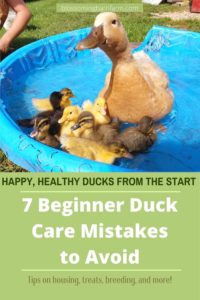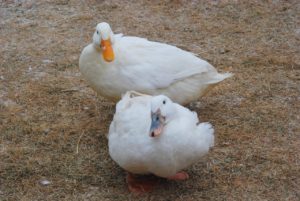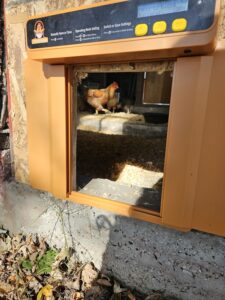Table of Contents
When you get your first ducks, there are so many choices to make – what food you will buy, where you will house your ducks, what breed and how many to get, what temperature to keep the brooder at, how much to feed them, and many more. It’s easy to get overwhelmed by all this and make mistakes. When you’re starting out, it’s okay to make mistakes – that’s how we learn! But some mistakes can be deadly to your new livestock. Make your duck experience easy and fun by avoiding these beginner duck mistakes!
7 Beginner Duck-Keeping Mistakes to Avoid:
•Cleaning your duck coop too frequently
•Using newspaper for bedding
•Having too little ventilation in your coop
•Using chicken waterers
•Feeding bread to your ducks
•Getting only one duck
•Keeping too many drakes
Cleaning too Frequently
When you first get ducks, you’ll quickly learn that ducks poop a lot. So you might be tempted to treat their pen like a litter box and clean it daily.
Don’t do that. You can save yourself so much trouble by only cleaning the coop a few times a year with the deep litter method. Using the deep litter method, you can reduce your workload and create a host of benefits for your ducks.
The deep litter method involves adding many layers of clean bedding on top of soiled bedding. Over time, this creates a thick layer of litter for your birds and reduces your workload. This method is ideal for ducks because it ensures a deep enough bed for your ducks, helps keep your eggs clean, creates valuable compost, and saves you the work of cleaning your coop weekly.
Interested in learning more about the deep litter method? Click here!
I use the deep litter method with my flock and clean out my coop about three times per year: once in Spring, once in fall, and sometimes once in Winter if the snow is shallow enough for my wheelbarrow. My ducks have plenty of clean bedding to nestle in, and my eggs stay clean.
Using Newspaper for litter
There are lots of great duck bedding options like shavings, straw, and compressed bedding pellets. But one option you need to stay away from is newspaper sheets.
Newspaper bedding doesn’t provide enough grip or absorbency for ducks. Ducks kept on newspaper will slip and ducklings may develop spraddle leg. Spraddle leg happens when ducks’ legs slide out from under them due to walking on slippery footing. This condition severely inhibits walking and damage can be permanent. Ducklings with spraddle leg will have great difficulty walking due to their legs being set too far apart. Spraddled leg is treatable with hobbles to support the legs during healing and growth. But, as with many things, the best treatment is prevention. Make sure to use bedding with good footing to get your ducklings off to a great start in life!
In addition to newspaper, you should also steer clear of cardboard and plastic in your brooder or coop. If you must use these materials on the bottom of your pens, make sure to cover them in a thick layer of straw, shavings, or sand.
In addition, newspaper is not absorbent enough for ducks. Duck droppings are watery, and you’ll need high absorbency bedding to contain the mess. If newspaper is used, droppings will accumulate on top of the newspaper and create an unhealthy layer of muck.
Newspaper is a cheap, easy-to-find bedding so it’s an easy beginner duck mistake to make. But now you know better!
Having too little ventilation in Your Coop
When you’re building your duck coop, you might think that cozier is better. And, while it is good to have a warm place for your birds to nestle down, it’s important to allow ample airflow too. Good ventilation plays a key role in reducing ammonia buildup, maintaining comfortable temperatures, and controlling humidity levels.
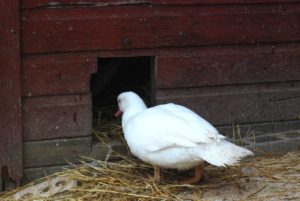
Ammonia is a naturally occurring gas that is produced by all animals in their droppings and urine. In low concentrations, ammonia is harmless, but it can quickly build up in poorly ventilated areas. Ammonia toxicity causes eye irritation and respiratory distress in severe cases.
Good ventilation is also crucial to maintaining a comfortable temperature in your coop. On hot days, ample airflow will help keep the coop at a comfortable temperature. Ducks are especially prone to heatstroke due to their thick feathers and good ventilation will go a long way in preventing it.
It’s also important to control the humidity in your coop. Not only can high humidity make your coop feel stuffy, but it can also cause your ducks to get chilled in cold weather. Cold, humid coops are the perfect recipe for moisture to build up and freeze on your ducks’ feathers and chill them.
A good ventilation rule of thumb is to have one square foot of ventilation per every 10 square feet of floor space. One square foot of ventilation means one square foot of wall or ceiling space (including the duck door) that allows air exchange. Of course, this calculation is only an estimate, and the actual amount of ventilation required will vary greatly based on variables like the height of your coop, the number of birds you have, the type of bedding you use, your climate, and the amount of time your birds spend inside. (Click here for more information on ventilation)
Using Chicken Waterers
While it might not seem very important, the kind of waterer you give your ducks has considerable wellness implications. The right waterer will allow both the volume and depth of drinking water that ducks need.
Because ducks love mud, their heads get very dirty. To prevent buildup over their nostrils and eyes, ducks frequently wash their faces in water. To help your ducks stay clean, you’ll need to provide water at least as deep as their bills. Without deep water, ducks can get sticky eye and breathing issues from debris.

Most of the chicken waterers you’ll find in stores have a water tray that is about 1/2 inch deep. Ducks’ bills are about 2.5 inches long, so 1/2 an inch is too shallow for them to stay clean with. So if you decide to use chicken waterers for your ducks, make sure that there’s at least one other container that’s at least 2.5 inches deep. (Hint – a swimming pool counts!)
Feeding Bread to Your Ducks
Ducks love to mix their food and water together, and since bread expands with water, bread is a potentially deadly duck food. If you search online poultry forums, you will find dozens of stories and PSA’s talking about birds who consumed bread and choked as the bread expanded and became too large to swallow. Any duck can choke, but smaller ducks (like mallards and calls) and ducklings have a higher risk for choking than larger birds.

Not only is bread a choking hazard for ducks, but it also provides poor nutrition. Bread is essentially “empty calories” for ducks and feeding too much of it can cause malnutrition. Ducks who fill up on bread eat less nutritious food and become deficient in key nutrients.
Getting only One Duck
These days, it’s becoming more and more common for people to have ducks for pets. And, while there’s absolutely nothing wrong with that, many people go wrong by only purchasing one duck. Ducks are flock animals and require socialization with other birds. When you are deciding how many ducks to purchase, make sure to consider how important it is for ducks to socialize with their own species. Just like how humans would be unhappy if they never spoke to other humans, ducks become unhappy if they can’t interact with other ducks.
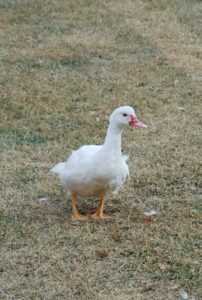
Ducks also crave safety in numbers. In the wild, duck flocks survive by alerting each other to threats.
Solo ducks will be stressed out by constantly feeling the need to be “on alert” without having buddies to depend on. Additionally, if you live in a cold climate, ducks will appreciate having friends to snuggle with on frigid days.
If you are getting ducks, it’s important to get at least two. I recommend getting three or four ducks to create a true flock.
Keeping too Many Drakes
One of the appeals to keeping poultry is the ease at which you can control reproduction. Unlike with mammalian livestock like goats and cows, you don’t need to separate male and female poultry to prevent reproduction. If you don’t want more birds, you simply don’t incubate the eggs. Even though drakes and hens can live together, you need to control the drake population to keep your birds happy. A flock with too many drakes will experience increased fighting and injuries.
Like most animals, male ducks fight for the right to breed with available hens. When there aren’t enough hens to go around, drakes fight too much. Not only does this fighting disturb the balance of your flock, but it can cause injuries to your birds. Fighting ducks can injure themselves by pulling out feathers and injuring eyes, wings, and legs.
Furthermore, competitive drakes will breed with hens too frequently and cause injuries. During breeding, drakes bite the hen’s feathers and sometimes pull them out. Excessive breeding can lead to bald spots that leave hens more vulnerable to harsh weather and injuries. Drakes can occasionally be too rough on feathers and cause tears in the skin. When these cuts happen near the eyes, they invite infection that can cause blindness or death. Though it’s rare, hens may need to be put down because of such infections.
To keep your flock in balance, aim for a ratio of around one drake for every five hens. This ratio will keep your birds healthy while keeping your fertilization rate high.
I hope this post helped take away some confusion in prepping for your first duck flock. Avoiding these beginner duck mistakes will go a long way in preventing injuries, illness, and unnecessary heartache. I know there’s a lot to think about, but don’t worry – you got this! Have fun on your duck journey and happy homesteading!


